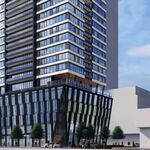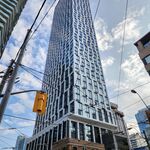U
unimaginative2
Guest
POSTED ON 08/02/06
Profit plans invade the waterfront void
JOHN BARBER
A $10-million, abandoned ferry terminal. An expanded island airport. A huge, new power plant right next to the huge, old, abandoned power plant. Such are the latest fruits of waterfront "revitalization." Poor waterfront!
The only unalloyed good news to emerge recently is the development of a new film studio complex deep in the Port Lands -- exactly the right thing in exactly the right place. If not outright disastrous, every other recent development represents a serious setback to the original dream of a new, clean and green front porch for Toronto. A quick look ahead reveals no hope.
The next disaster made itself known at city hall yesterday when Home Depot and partners submitted their plans for the site of the former tent city at the mouth of the Don, the largest piece of vacant land on the central waterfront. Although horrified councillors took the advice of city planners and turned the group down flat, their vision will not recede so easily. It is the infallible market at work.
Defying all manner of plans completed and even more evolving, ignoring utopian images of water-lapped urban villages, the Home Depot group (also including Castlepoint Development) proposed a clotted nest of 11 high-rise towers on the site, two of them more than 50 storeys tall, along with the usual big-box store and a massive parking garage to match it.
If the point was to define precisely what 10 years of intensive planning consistently recommended against, the Home Depot group nailed it. But if it was only intended as a shot across the bow, it was still well done, reminding planners and politicians from the get-go who's really in charge.
Anybody old enough to remember what developers Huang & Danczy did to Harbourfront will recognize the peril. The process by which Harbourfront transformed from waterfront village into concrete wall is back in action.
Although council turned it down, the latest Home Depot proposal lands a severe blow against the high hopes surrounding a comprehensive plan for the district in which it is located, known as the East Bayfront. The Toronto Waterfront Revitalization Corp. promoted that plan as one of its major achievements. But the first slated project flies in its face.
For some strange reason, the TWRC plan did not extend far enough east to incorporate the largest development site in the East Bayfront, which thus escaped its idealistic vision. The corporation protested against the latest proposal, but only as a bystander. It can hardly be pleased that Castlepoint is also one of the largest landowners in the already-planned part of the precinct.
For their part, city planners concluded that the application is premature, even though Home Depot first applied to build a store on the site 10 years ago. The end result is a perfect argument at the Ontario Municipal Board, should the developers decide to make it. How long are they expected to wait while all the planning agencies dither and fight?
Luckily for the city, the board turned down Home Depot's 1990s plan to build a basic big box on the site. But that luck could change. At any rate, the matter is now out of the hands of all those local authorities who once presumed to master it.
So what else is new? The city huffs and puffs while the Toronto Port Authority barges ahead with its own waterfront vision at the island airport. The TWRC emits equally fruitless indignation while the provincial government imposes an unnecessary power plant on what should be a prized redevelopment site in the Port Lands. The gradual emergence of Harbourfront II in the East Bayfront only emphasizes the basic inadequacy of the entire waterfront initiative: Nobody's in charge.
Until now, that failure ensured that nothing much happened on the waterfront. But those days appear to be over. Things are happening now, and the fruits of failure are becoming real -- in an all-too-familiar form.
jbarber@globeandmail.com
Profit plans invade the waterfront void
JOHN BARBER
A $10-million, abandoned ferry terminal. An expanded island airport. A huge, new power plant right next to the huge, old, abandoned power plant. Such are the latest fruits of waterfront "revitalization." Poor waterfront!
The only unalloyed good news to emerge recently is the development of a new film studio complex deep in the Port Lands -- exactly the right thing in exactly the right place. If not outright disastrous, every other recent development represents a serious setback to the original dream of a new, clean and green front porch for Toronto. A quick look ahead reveals no hope.
The next disaster made itself known at city hall yesterday when Home Depot and partners submitted their plans for the site of the former tent city at the mouth of the Don, the largest piece of vacant land on the central waterfront. Although horrified councillors took the advice of city planners and turned the group down flat, their vision will not recede so easily. It is the infallible market at work.
Defying all manner of plans completed and even more evolving, ignoring utopian images of water-lapped urban villages, the Home Depot group (also including Castlepoint Development) proposed a clotted nest of 11 high-rise towers on the site, two of them more than 50 storeys tall, along with the usual big-box store and a massive parking garage to match it.
If the point was to define precisely what 10 years of intensive planning consistently recommended against, the Home Depot group nailed it. But if it was only intended as a shot across the bow, it was still well done, reminding planners and politicians from the get-go who's really in charge.
Anybody old enough to remember what developers Huang & Danczy did to Harbourfront will recognize the peril. The process by which Harbourfront transformed from waterfront village into concrete wall is back in action.
Although council turned it down, the latest Home Depot proposal lands a severe blow against the high hopes surrounding a comprehensive plan for the district in which it is located, known as the East Bayfront. The Toronto Waterfront Revitalization Corp. promoted that plan as one of its major achievements. But the first slated project flies in its face.
For some strange reason, the TWRC plan did not extend far enough east to incorporate the largest development site in the East Bayfront, which thus escaped its idealistic vision. The corporation protested against the latest proposal, but only as a bystander. It can hardly be pleased that Castlepoint is also one of the largest landowners in the already-planned part of the precinct.
For their part, city planners concluded that the application is premature, even though Home Depot first applied to build a store on the site 10 years ago. The end result is a perfect argument at the Ontario Municipal Board, should the developers decide to make it. How long are they expected to wait while all the planning agencies dither and fight?
Luckily for the city, the board turned down Home Depot's 1990s plan to build a basic big box on the site. But that luck could change. At any rate, the matter is now out of the hands of all those local authorities who once presumed to master it.
So what else is new? The city huffs and puffs while the Toronto Port Authority barges ahead with its own waterfront vision at the island airport. The TWRC emits equally fruitless indignation while the provincial government imposes an unnecessary power plant on what should be a prized redevelopment site in the Port Lands. The gradual emergence of Harbourfront II in the East Bayfront only emphasizes the basic inadequacy of the entire waterfront initiative: Nobody's in charge.
Until now, that failure ensured that nothing much happened on the waterfront. But those days appear to be over. Things are happening now, and the fruits of failure are becoming real -- in an all-too-familiar form.
jbarber@globeandmail.com




